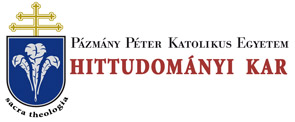Folia Theologica 16. (2005)
Pál Bolberitz: The Beginnings of Hungarian Philosphy (The Reception of Nicholas of Cusa in the work of "De homine" by Peter Monedulatus Csokas Laskoi)
THE BEGINNINGS OF HUNGARIAN PHILOSOPHY 17 Church (among them primarily St. Augustine25, the fashionable author of the Reformation) and certainly the Holy Bible itself, and furthermore the popular authors of the 15th century, Ficinus and Pico della Mirandola. Among the renaissance philosophers of the 15th century he perefers the Cardinal Nicholas of Cusa, who was first referred to in the Hungarian special bibliography of philosophy, and the philosophical intuition of Laskoi - as it can be seen - is primarily determined by the conception of Cusanus. Regarding the methods implemented by Laskoi, in verification he argues by accomplishing the scholastic syllogism, though in the first chapters of his work, and in Book Two, where he exposed the construction of the human body, this method had been neglected. The work of Laskoi is not originated from a theological preconception. The existence of world is derived not from the existence of God, even on the contrary: accepting implicitly the existence of God, as the Creator, first - using an inductive approach (this is very typical for the renaissance philosophical intuition) - he admires the world, then analysing the operation of the human soul, he attains the final principle of human existence, that is God. Part of the book on human body lays down rather a descriptive phenomenology for an anthropology, which covers the knowledge of his age, and contains a number of interesting observations, remarkable in respect of medical history. It is worth to take a glance - in literal translation26- the content of the book of "De homine" by Laskoi, because it entirely presents the logical structure and the theological conclusion of the book, which - at least in the first volume of his book - he is going to prove. 25 Laskai mostly quotes Aristoteles (circa forty times), but most frequently citâtes several works of St. Augustine (approximately sixty times). N. B. By the way, the reception of St. Augustine in this book by Laskai is worth to be elaborated in another study: Here 1 enlist only those the works by St. Augustine, which had been citated in Laskai ’s book more often: Liber de immortalitate; De civitate Dei: Retractiones Tractatus in Johannem; De fide et symbolo; De spiritu et anima; De essentia divinitatis; De Genesi ad litteram; De incarnatione; De libero arbitrio; Contra Faustum; Adversum Valentinum; De Trinitate; In haeresiologia; 26 The translation of the content - by implementing and correcting the translation by Laszlo Mátrái - was translated by Dr. Pal Bolberitz [See the manuscript].
